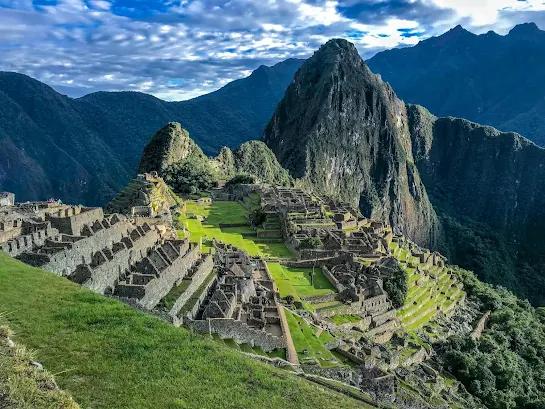Machu Picchu: Unveiling the Mysteries of the Sacred Valley
Machu Picchu, the lost city of the Incas, is one of the most iconic landmarks in the world, drawing millions of visitors each year to its mist-shrouded terraces and stone ruins. However, while most tourists flock to the main site, there are many other fascinating sites within the Sacred Valley of the Incas that remain underexplored. This article will take you on a journey beyond Machu Picchu, revealing the hidden treasures of the Sacred Valley, including lesser-known ruins, scenic hikes, and cultural experiences that offer a deeper connection to the Inca civilization.
The Legacy of the Incas
The Inca Empire, which thrived from the 13th to the 16th centuries, left a profound mark on the landscape of the Sacred Valley. The valley was an important agricultural, religious, and political center for the Incas, and its fertile lands were used to grow crops such as maize and potatoes. The Incas also built an extensive network of roads, terraces, and ceremonial sites throughout the valley, many of which are still visible today.
Exploring the Sacred Valley’s Lesser-Known Sites
Ollantaytambo: The Living Inca Town
Ollantaytambo, located about 60 kilometers (37 miles) from Cusco, is often overshadowed by Machu Picchu, but it is one of the most well-preserved Inca towns in Peru. The town's massive fortress, which sits atop a steep hill, was the site of a famous battle between the Incas and the Spanish conquistadors. The ruins include impressive terraces, stone structures, and a series of ceremonial fountains. The town itself is also worth exploring, with its narrow cobblestone streets and traditional adobe houses offering a glimpse into daily life during the Inca era.Pisac: The Agricultural Marvel
Pisac is another important Inca site located in the Sacred Valley, about 33 kilometers (20 miles) from Cusco. The Pisac ruins are known for their intricate agricultural terraces that cover the mountainside, demonstrating the Incas' advanced farming techniques. The site also features a series of ceremonial temples, including the Sun Temple, which offers stunning views of the valley below. The town of Pisac is famous for its vibrant market, where visitors can purchase traditional handicrafts and textiles.
Moray: The Inca Agricultural Laboratory
Moray, located about 50 kilometers (31 miles) northwest of Cusco, is one of the most intriguing sites in the Sacred Valley. This circular terraced complex is believed to have been an agricultural laboratory where the Incas experimented with different crops and microclimates. The concentric terraces create a series of microclimates, allowing the Incas to study the effects of altitude and temperature on their crops. Visiting Moray offers a unique insight into the Inca’s sophisticated understanding of agriculture and the environment.
Maras: The Salt Mines of the Incas
Just a short distance from Moray, the salt mines of Maras are another fascinating site to explore. These terraced salt pans have been in use since Inca times and are still operational today. The salt is harvested by local families using traditional methods, and visitors can walk among the pans to see the process up close. The sight of thousands of salt pools shimmering in the sun is truly unforgettable.
The Inca Trail: Beyond the Classic Route
While the Classic Inca Trail to Machu Picchu is the most famous hiking route in Peru, there are several alternative trails that offer equally stunning scenery and fewer crowds. The Salkantay Trek, the Lares Trek, and the Choquequirao Trek are all excellent alternatives that take you through remote villages, high mountain passes, and lesser-known Inca ruins. These treks provide a more immersive experience of the Sacred Valley, allowing you to connect with the landscape and culture in a deeper way.
Practical Tips for Exploring the Sacred Valley
Best Time to Visit: The best time to visit the Sacred Valley is during the dry season, from May to September. The weather is cooler and more predictable, making it ideal for outdoor activities.
Entrance Fees: The Cusco Tourist Ticket (Boleto Turistico) covers entrance to most of the sites in the Sacred Valley, including Ollantaytambo, Pisac, and Moray. The ticket costs PEN 130 (approximately USD 40) for adults and is valid for 10 days.
Guided Tours: Hiring a guide for your visit to the Sacred Valley is highly recommended. A knowledgeable guide can provide valuable historical context and help you navigate the less touristy areas.
Accommodation: The Sacred Valley has a range of accommodation options, from budget hostels to luxury lodges. Staying in one of the valley’s towns, such as Ollantaytambo or Urubamba, allows for easy access to the surrounding sites.
Conclusion
The Sacred Valley of the Incas is a region rich in history, culture, and natural beauty. While Machu Picchu is undoubtedly the crown jewel of the valley, there are many other sites that deserve exploration. By visiting Ollantaytambo, Pisac, Moray, Maras, and trekking the alternative Inca Trails, you can experience the full depth and diversity of this extraordinary region. These lesser-known sites offer a more intimate and authentic connection to the legacy of the Incas, making your journey through the Sacred Valley truly unforgettable.




Comments
Post a Comment